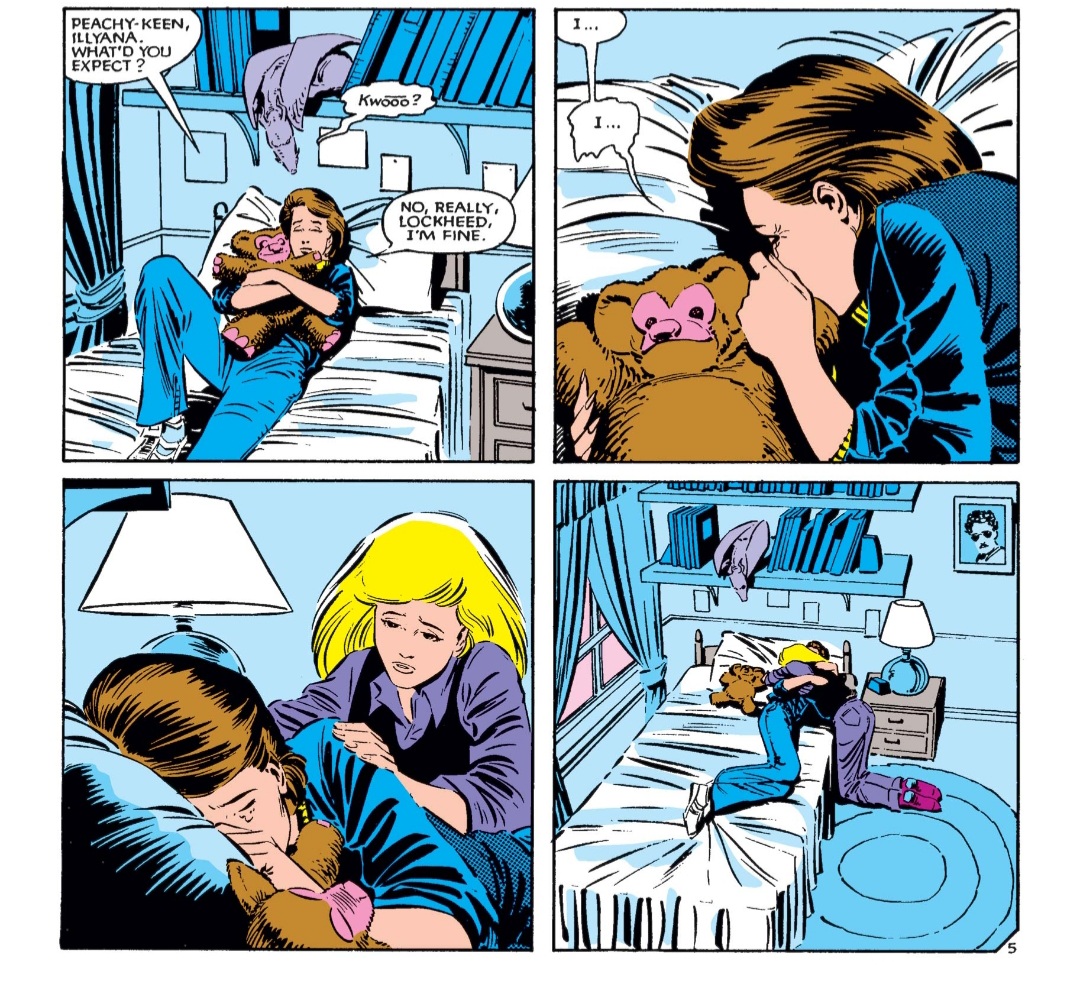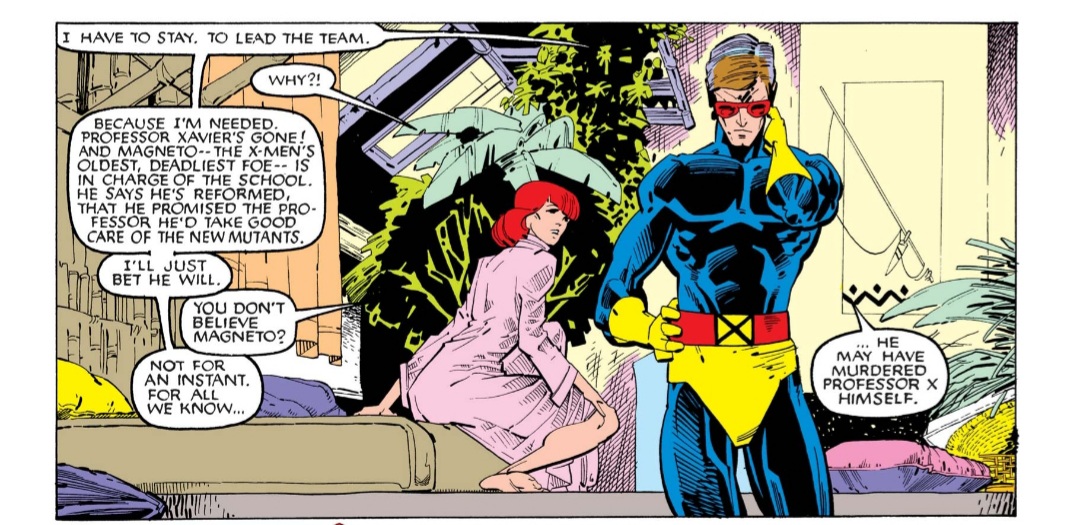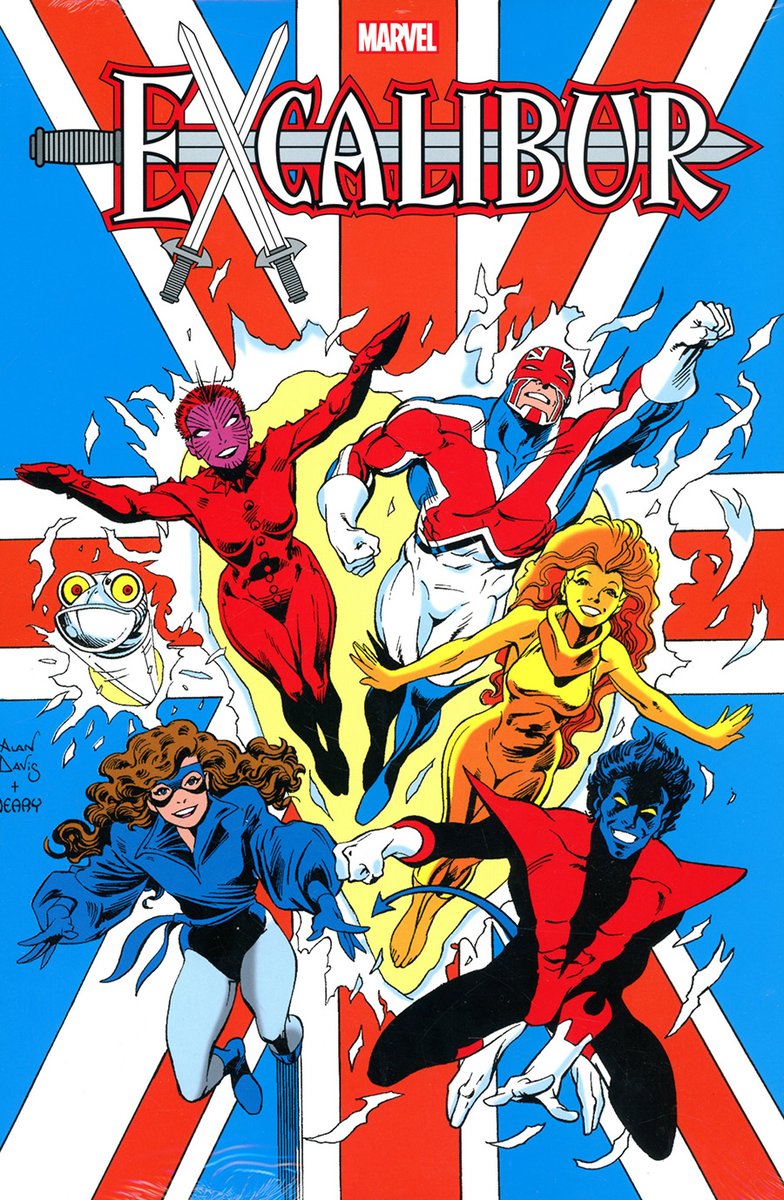
In UXM 183 Claremont takes the seemingly superficial concept of a teenager getting dumped and lends it a weight and interiority beyond all expectation. As Piotr breaks Kitty’s heart, she is run through a complex gamut of emotional responses to devastating effect. #xmen 1/10 

The backdrop for the scene (cliffs at sunset) is both dramatic and (ironically) romantic. This is enhanced by JRJR’s use of hot pink colour shade panels as well as Piotr’s tendency to stare out across the endless water, while struggling to make eye contact with Kitty. 2/10 

While his actions in Secret Wars (not written by Claremont) were indeed callous, Claremont’s Piotr is arguably noble in this scene, laying out the truth as he sees it out of respect for Kitty’s feelings. The damage, however, is already done. 3/10 

The most poignant aspect of the scene is the juxtaposition between what Kitty says and what Kitty thinks, a divide that is often accentuated and/or mediated by her expression and posture in the highly capable hands of John Romita Jr, doing some stellar expressionist work. 4/10 

In conversation, Kitty commits, as best she can, to casual rationality, but her inner monologue is neither casual nor rational. She is spiraling hard through devastation, insecurity, and despondency. 5/10 

Even the tone of the conversation is wildly inconsistent. Kitty acts almost indifferent at times in her responses to Piotr, but flashes quickly to anger when triggered, thus reflecting the interior turmoil she is undergoing. 6/10 

Kitty’s attempt to hold it together isn’t just for the benefit of spiting Piotr, but also for herself. We see her lash out just a bit at Storm (in her mind, anyway), then strive to hold on in front of Illyana, before falling apart in her bedroom. 7/10 

The combined effect of the scene is a rather intense blend of awkwardness and anxiety that captures the raw edge of emotions that one might expect from any teenager in a similar situation. Of course, Kitty isn’t “any teenager,” so the scene is humanizing of the superhero. 8/10 

A later scene explores the complex ambivalence that the end of the relationship creates for Kitty. “I hate him, Ororo, with all my heart. I love him.” The tightening of the world around Kitty, as she says this, is elegantly exhibited in Romita’s collapsing vertical panels. 9/10 

In all of this, Claremont’s love for Kitty as a character shines through, as does the respect that he has for his own character creation. He strives to give life to Kitty’s anguish and sorrow through a deeply method approach to her voice in the scene. Arguably, he finds it. 10/10 

• • •
Missing some Tweet in this thread? You can try to
force a refresh






















